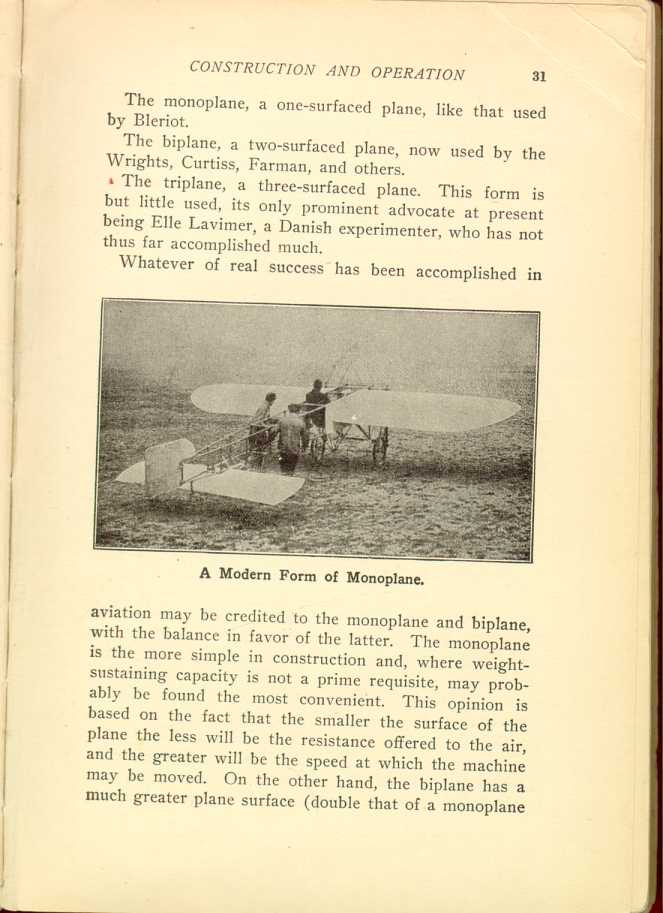Three Kinds of Aeroplanes.
There are three forms of aeroplanes, with all of which more or less success has been attained. These are:
The monoplane, a one-surfaced plane, like that used by Bleriot.
The biplane, a two-surfaced plane, now used by the Wrights, Curtiss, Farman, and others.
The triplane, a three-surfaced plane This form is but little used, its only prominent advocate at present being Elle Lavimer, a Danish experimenter, who has not thus far accomplished much.
Whatever of real success has been accomplished in

A Modern Form of Monoplane.
[Description: Black and white photograph: An aeroplane, on ground, with
wheels, two large flat wings and a rudder. Man operates as two men
assist.]